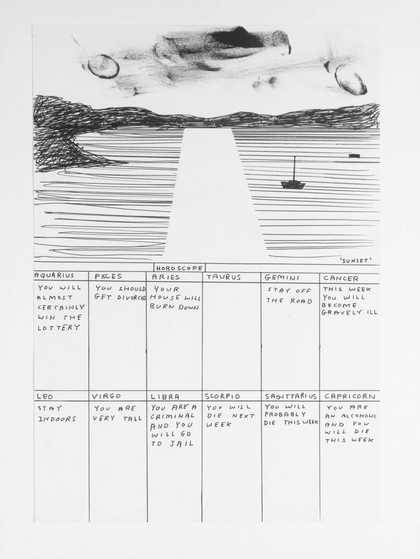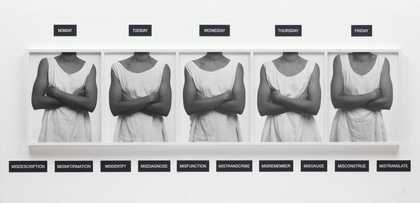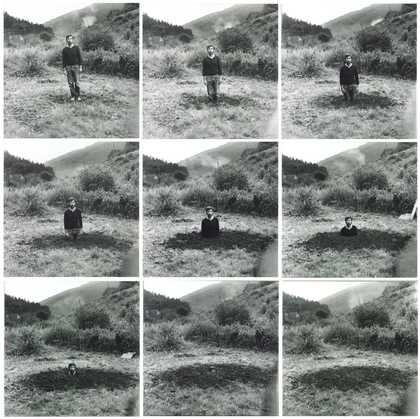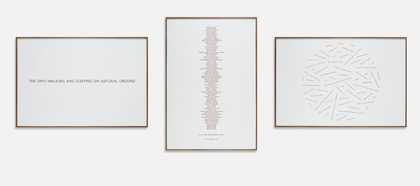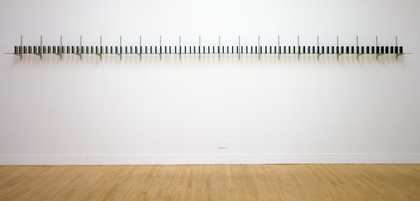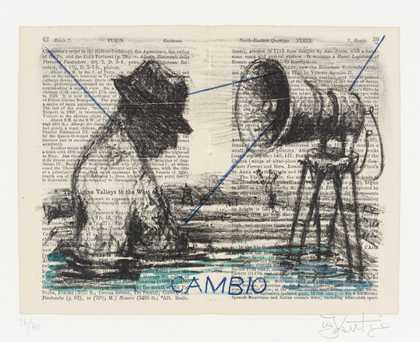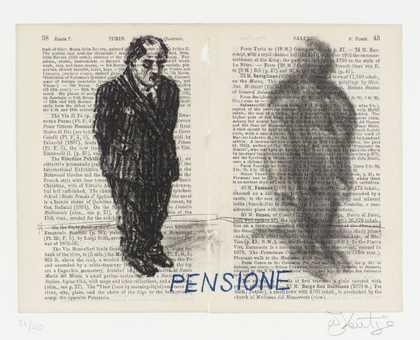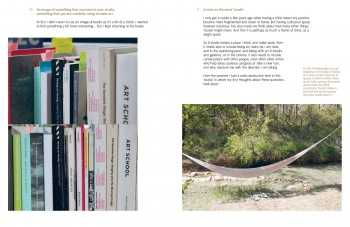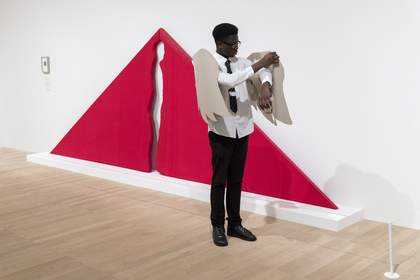Sketchbooks and journals
Lots of art has a diary-like feel to it because artists often use their own experiences as a source for the art they make. This is especially true of sketchbooks. Sketchbooks are not just for sketching in; artists usually have their sketchbooks on them all the time. They use them not only for sketching what they see around them and working out ideas for artworks, but also to jot down thoughts and feelings (as well as shopping lists and reminders of things they need to do that day!).
Artist Donald Rodney’s sketchbooks provide a fascinating insight into his art and ideas but also into what he was thinking and feeling. Rodney was a leading figure in Britain’s BLK Art Group of the 1980s and his work appropriated images from the mass media, art, and popular culture to explore issues of racial identity and racism. He also suffered from the illness sickle cell anaemia and in his sketchbooks we often see scribbled notes or words that seem to be expressing his response to the devastating illness. He talks about fear and immortality, and also about his father (as sickle cell is an inherited disease). But he didn’t want to be defined by his illness and uses autobiography to address larger social and political issues, aiming to show ‘disease’ in the human body as a metaphor representing political or societal ‘diseases’ such as racism.
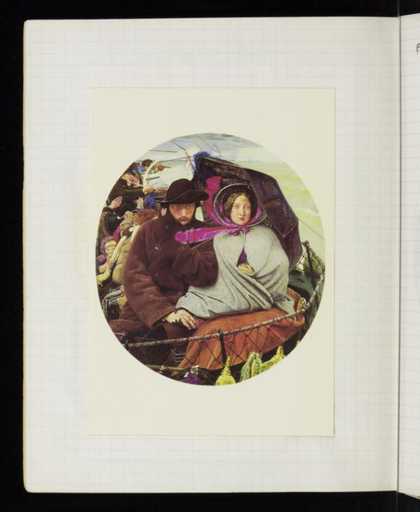
Postcard attached to page featuring reproduction of Ford Madox Brown's 'The Last of England'
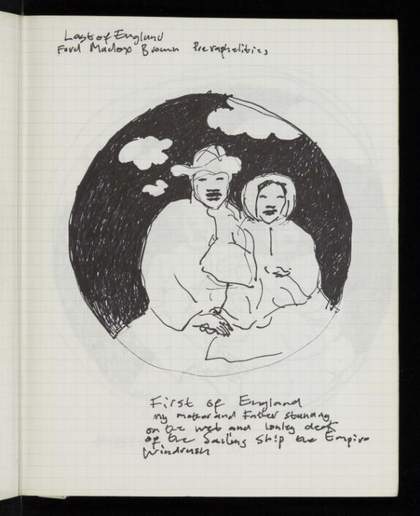
Sketch titled 'First of England' © The estate of Donald Rodney
This is a very different type of sketchbook diary. Josef Herman used his sketchbooks to record the community around him in South Wales. He captured everything, from the work they did and where they lived to their personal lives.
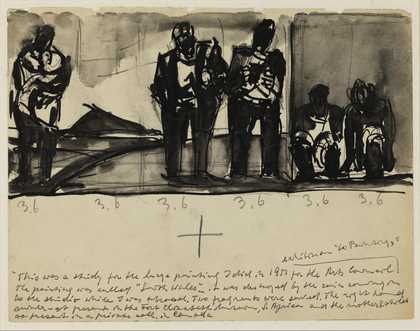
Josef Herman
Study for ‘South Wales’ (Notes from a Welsh Diary) ([c.1951])
Tate Archive
Sketchbooks aren’t the only places where ideas can be stored. Tumblr is a type of visual sketchbook, documenting things that people see around them in their daily lives, and want to remember or share. Explore Tate Collectives’ Tumblr for some art inspiration.
It’s all in the detail: Documenting everyday life
The stuff you do every day may not seem like the most interesting subject for an artwork – or a dairy! But it is amazing how fascinating routines and ordinary events can be when we look at them closely and record them.
Conceptual artists are interested in ideas and processes rather than finished art objects. They often document their lives or the lives of those around them using photography, recorded notes and journals. Ian Breakwell was an obsessive diarist. He kept what he called his Continuous Diary for twenty years! In it he noted down what he saw every day and he used this as a source for the artworks he made. This is what he said about what his diary recorded: ‘the side-events of daily life, by turns mundane, curious, bleak, erotic, tender, vicious, cunning, stupid, ambiguous, absurd, as observed by a personal witness’.
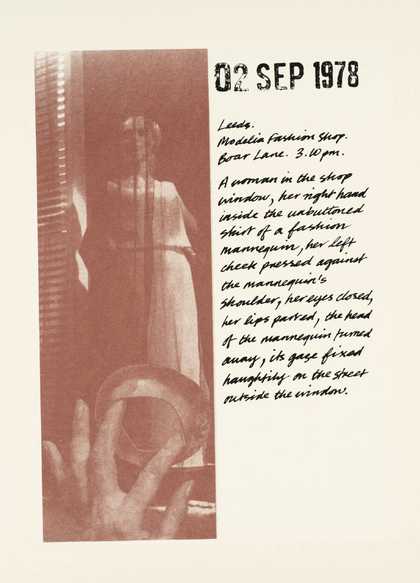
Ian Breakwell
[no title] (1983)
Tate
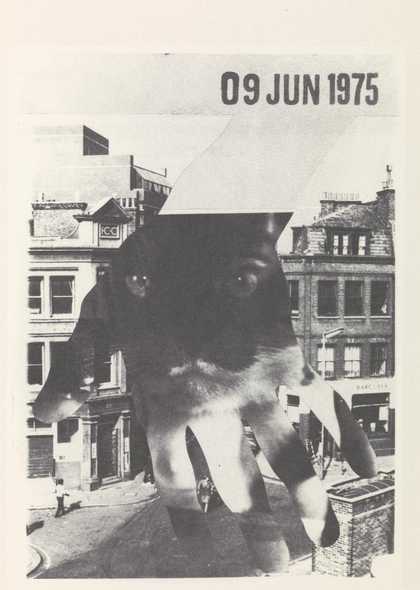
Ian Breakwell
[no title] (1983)
Tate
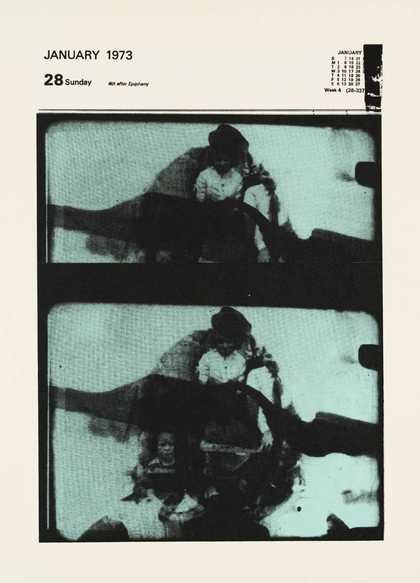
Ian Breakwell
[no title] (1983)
Tate
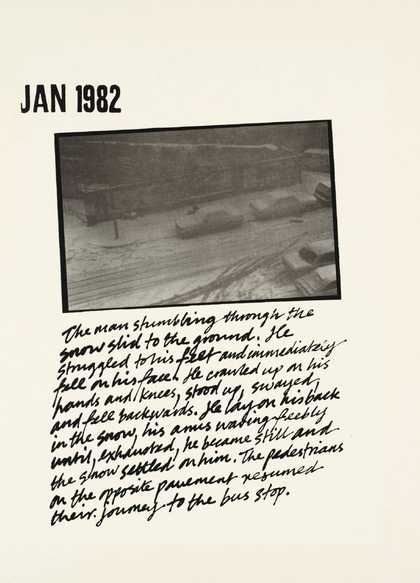
Ian Breakwell
[no title] (1983)
Tate
Vito Acconci is another conceptual artist who uses notes and photographs to document his life. For Room Situation he explores the boundaries between his private and public life. For three weekends in January 1970 he moved furniture and objects from his New York apartment to a gallery eighty blocks uptown. If he needed any of these items while hanging about in his house, he returned to the gallery to borrow them, and took them back when he had finished using them. He carefully documented these movements of himself and his things. The distinction between the artist’s home and his gallery, and between his private and public activities, became increasingly blurred.
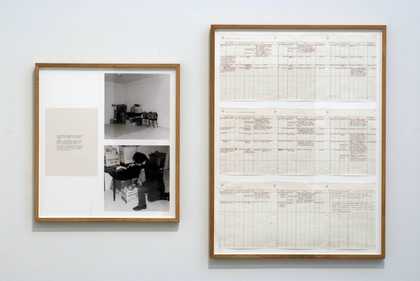
Vito Acconci
Room Situation (1970)
Tate
Photographs, notes, sketches, texts…what about the contents of a nappy?! For Post-Partum Document Mary Kelley created a diary documenting the first six years of her son’s life…from his first words to what he ate (and what came out the other end!).
Jonathan Borofsky kept a diary recording a very different sequence of personal experiences…his dreams. He started his dream diary in 1973 and uses the imagery and narratives he records as starting points for his paintings, sculptures and installations.
Personal lives, experiences and emotions
We are all familiar with video diaries – seen on TV, YouTube or other video-sharing channels. Artists have also used this format to create artworks that explore events in peoples’ personal lives. Artists also explore the line between the public and private, and the extent people are prepared to share – and over-share!
Gillian Wearing got people talking about their lives on video. Inspired by ‘fly-on-the-wall’ documentaries and confessional TV shows she put an advertisement in Time Out magazine, asking people to make their confessions on camera. Disguised, her participants are free to tell the truth about things to which they would never admit in daily life. (At the same time, they can invent flamboyant lies without being caught out).
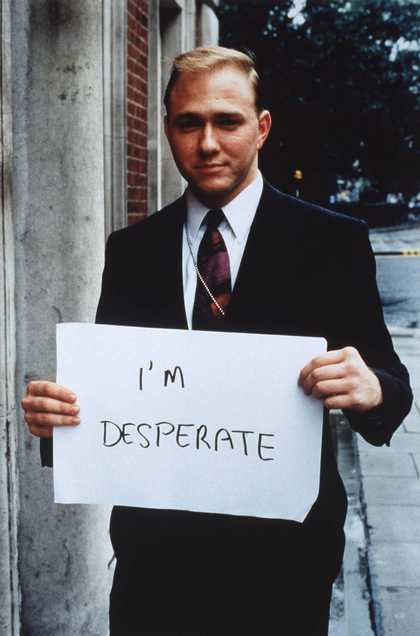
Gillian Wearing CBE
‘I’m desperate’ (1992–3)
Tate
© Gillian Wearing, courtesy Maureen Paley/ Interim Art, London
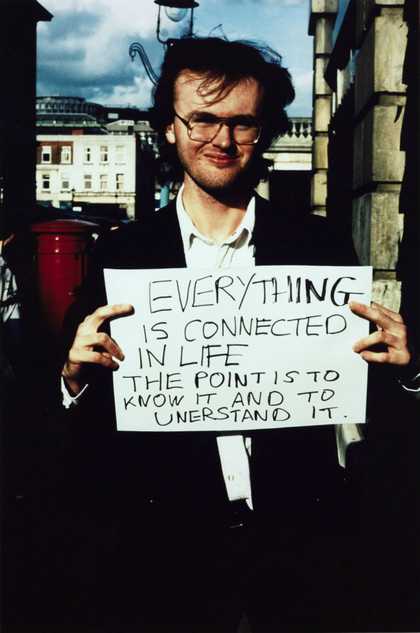
Gillian Wearing CBE
‘Everything is connected in life...’ (1992–3)
Tate
© Gillian Wearing, courtesy Maureen Paley/ Interim Art, London
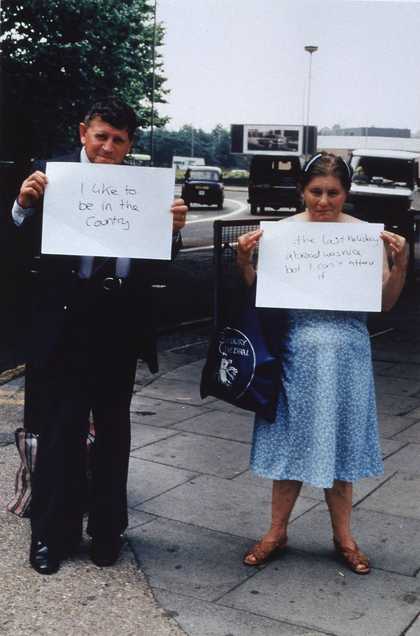
Gillian Wearing CBE
‘I like to be in the country’ (1992–3)
Tate
© Gillian Wearing, courtesy Maureen Paley/ Interim Art, London
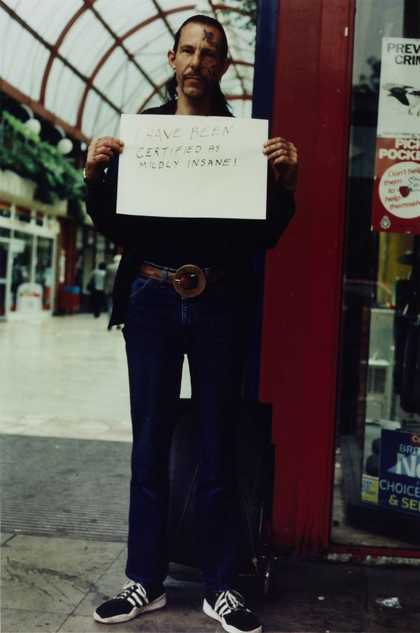
Gillian Wearing CBE
‘I have been certified as mildly insane!’ (1992–3)
Tate
© Gillian Wearing, courtesy Maureen Paley/ Interim Art, London
Artists Jo Spence and Tracey Emin share often painful, highly personal details of their own lives in their diary-like works. Photographer Jo Spence used the power of the camera to challenge society on issues of gender and class but also to explore her own history. Diagnosed with breast cancer in 1982, her feelings and responses to her treatment are captured in her moving photographs.
Tracey Emin is well known for using personal events as the subject for her art. Exploration of the Soul consists of thirty-two pages of text written over an intensive ten-day period recounting significant moments in her life up until the age of thirteen. The text is a mix of poetry and poignancy and is full of the tensions between the beauty, pleasure and pain which she sees as contributing to her young life.
Old letters, photographs and other documents can also become a diary of our lives, experiences and emotions. Barbara Hepworth’s beautiful letters tell us about what she was working on and what inspired her, as well as her daily routines. Find out more about her ideas in this video:
This film file is broken and is being removed. Sorry for any inconvenience this causes.
Artist Miranda July sees her home, her daily routine and the things she has around her as forming a history of her life and experience. They also provide inspiration for her films, performances and other creative projects. Watch this video to find out more.
Recording walks, journeys and travels
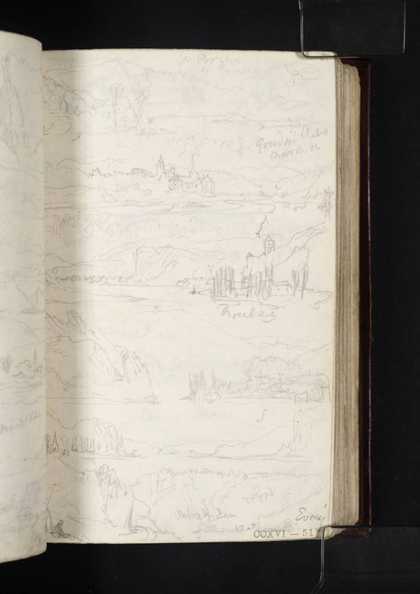
Joseph Mallord William Turner
Views on the Meuse between Godinne and Yvoir (1824)
Tate
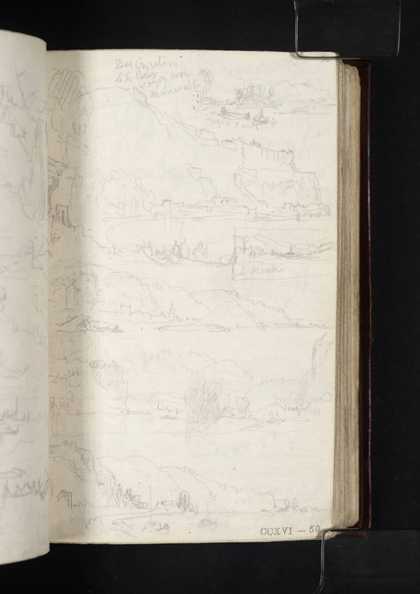
Joseph Mallord William Turner
Six Views on the Meuse at and near Namur (1824)
Tate
The idea of a travel diary or journal – where people capture the sites they see on their travels or holiday, is perhaps familiar to you. Most of artist J.M.W Turner’s sketchbookscan be seen as travel journals in that they record the journeys he made throughout his life around the UK and also around Europe.
Artist William Kentridge takes a slightly different approach – drawing his travel experiences directly onto the pages of a guide book!
It isn’t just exotic travels that artists are inspired to record in diary form. Diary obsessive Ian Breakwell’s The Walking Man Diary is a series of photographs which document the daily walks of an unknown man he saw from his window. Tom Phillips made a series of prints that form a visual diary of his daily walk to his studio. For these he photographed and grouped together some of the details he came across, from ornamental architectural features…to man-hole covers!
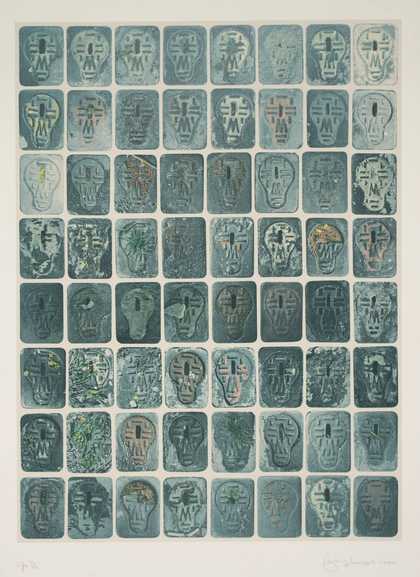
Tom Phillips
Sixty Four Stopcock Box Lids (1976–7)
Tate
Land artists record their walks through the landscape with maps, photographs and texts. Hamish Fulton calls himself a ‘walking artist’ rather than a land artist. He records details of what he sees and hears to create a poetic diary of his walks.
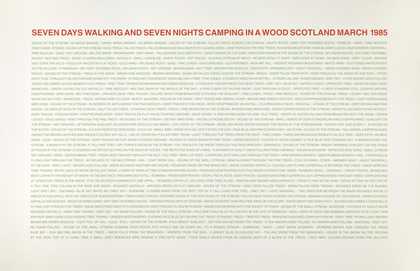
Hamish Fulton
Seven Days Walking and Seven Nights Camping in a Wood Scotland March 1985 (1985)
Tate
In the video work Measures of Distance Mona Hatoum also records her personal responses to a journey, but her document is about the emotions she feels having moved away from her family and the place she grew up. Through a series of conversations and letters with her mother she creates a diary-like journal of experiences of being separated from her family and familiar culture.
Have a go
Inspired by these artists, we’ve pulled together some ideas for recording the every day around you in creative ways:
- Carry a sketchbook or notebook with you everywhere for a week. Fill it with sketches of things you see and notes about things you think about (these can be as philosophical or as crazy as you like!). You could also stick things (photos, flyers etc) that reflect what you do and what your interests are. Use these notes and ideas a rich idea-store for your artwork
- Try recording the details of an ordinary day in your life. Use photographs and texts. You’d be surprised how boring details can become fascinating when you analyse them!
- Create a video diary or vlog. Get some inspiration from vlogger Hannah Witton
- Use letters and old photographs (these could be yours or those of a relative) as source material for your art
- Go for a walk and record things you see (or hear! Artist David Tremlett created a sound art diary, recording the sounds heard in 81 locations for his work The Spring Recordings 1972). You could photograph specific types of things you see (like doors, turns you make, or weeds!); or use words or phrases to record your responses to things and how they make you feel, like land artist Hamish Fulton

